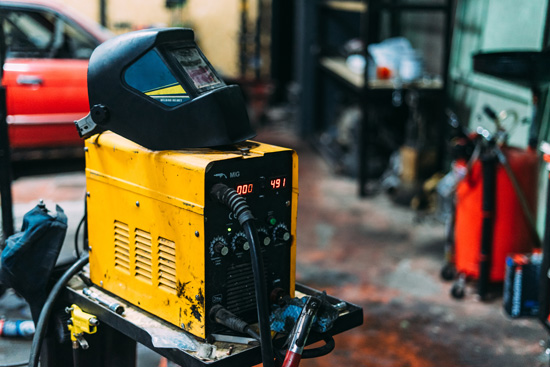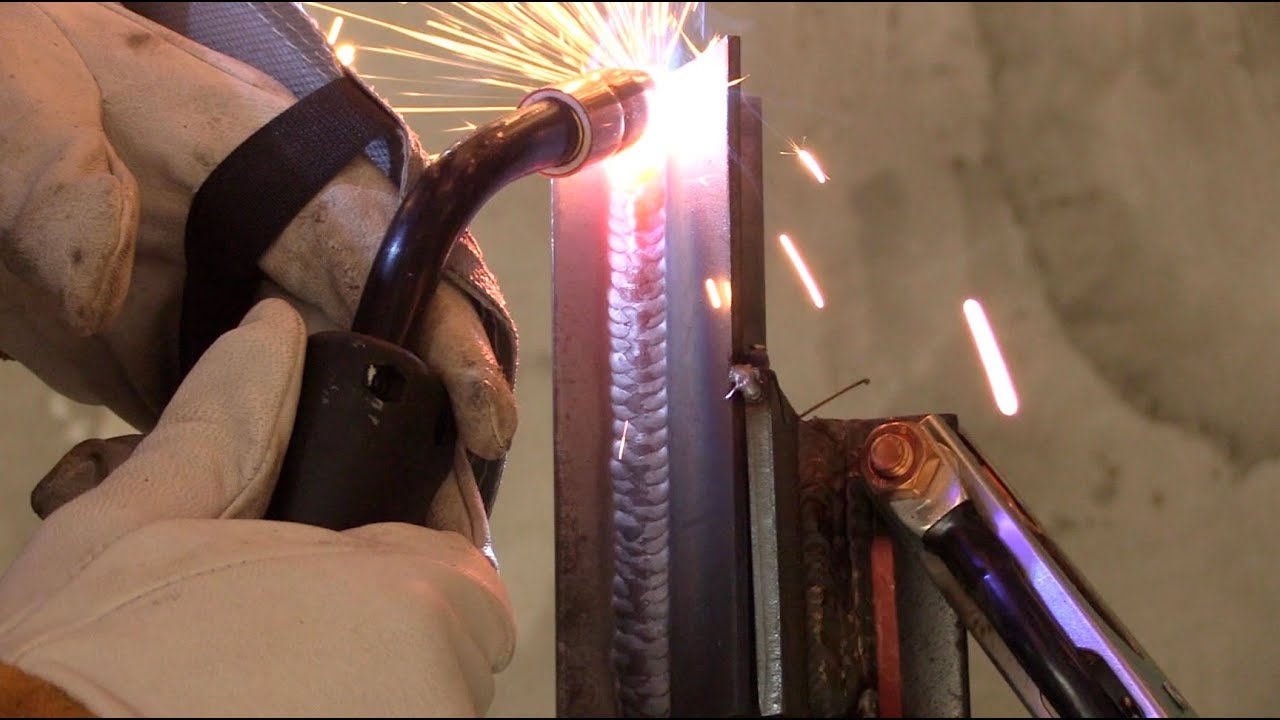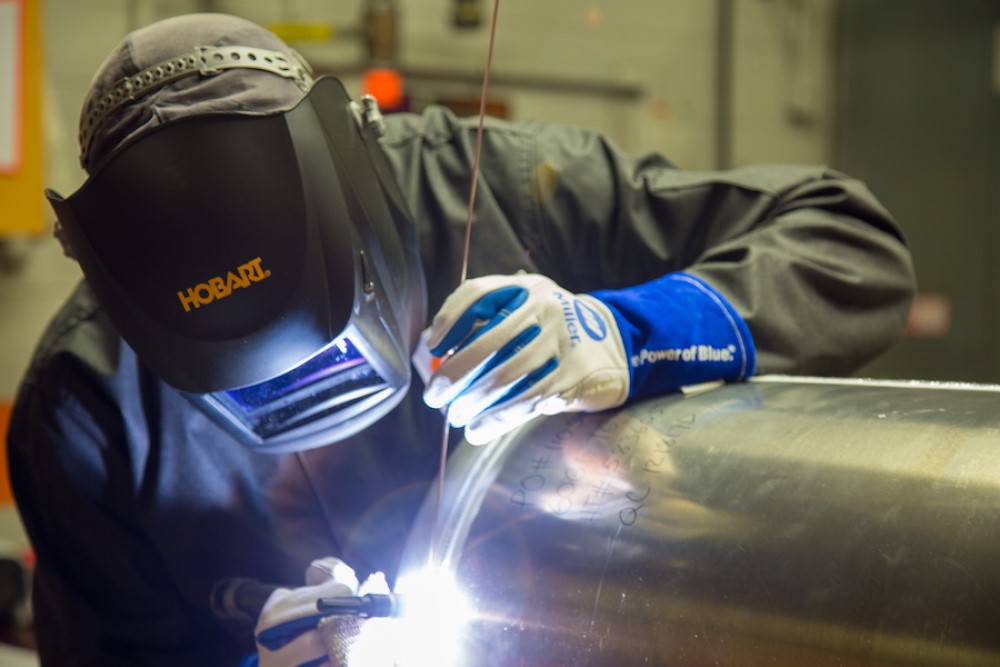When welding aluminum, an AC welder can produce a cleaner, more stable weld because the arc is stronger and the metal heats up more evenly. On the other hand, DC welder is said to be more reliable in cold weather and when working with difficult-to-weld materials like brass. However, for AC or DC for MIG welding aluminum, which would you choose? They each have their own pros and cons, we‘re sure you’ll be interested in the differences between them first!
The Differences Between AC & DC Welding
AC (Alternating Current) and DC (Direct Current) are two types of electrical current with distinct characteristics.
The main difference between AC and DC is the direction of flow of the electrical charge. In AC, the electrical charge changes direction periodically, typically at a rate of 60 cycles per second (Hz) in the electrical power grid. In DC, the electrical charge flows in a single, constant direction.
This difference in current flow affects how electrical devices and systems function, and in some cases, one type of current is preferred over the other for specific applications. For example, AC is used for electric power transmission over long distances because it can be easily transformed from high voltage to low voltage, while DC is commonly used in batteries and electronic devices where a constant current is needed.
In welding, AC and DC are used differently based on the type of metal being welded and the desired weld characteristics. AC welding is commonly used for aluminum and magnesium alloys, while DC welding is typically used for steels and other ferrous metals.

AC for MIG welding aluminum
While Alternating Current (AC) can be used for MIG welding aluminum, it is generally not the preferred choice compared to Direct Current Electrode Negative (DCEN). The reason for this is that AC produces an inconsistent arc that can result in a less stable weld, reduced weld penetration, and less desirable weld appearance.
Additionally, AC requires the electrode polarity to be reversed periodically, which can result in additional challenges when welding aluminum. If AC is used for MIG welding aluminum, it is often recommended to use a specialized AC power source that is specifically designed for welding aluminum.
DC for MIG welding aluminum
For MIG welding aluminum, Direct Current Electrode Negative (DCEN) is the preferred choice. DCEN provides a stable, consistent arc that results in a better weld quality, improved penetration, and a more desirable weld bead appearance.
Additionally, DCEN allows the welder to easily control the heat input into the weld, which is important when welding aluminum to prevent excessive heat buildup and warping. Overall, DCEN is considered to be the best choice for MIG welding aluminum due to its consistent arc, better weld quality, and improved control over the welding process.
AC or DC for MIG welding aluminum, which one would you choose?
For MIG welding aluminum, it is recommended to use Direct Current (DC) with electrode negative (DCEN) polarity. This is because DCEN provides a smoother, more stable arc, better weld penetration, and better weld bead appearance. AC can also be used for aluminum MIG welding, but it is typically less preferred due to its inconsistent arc and the need to periodically reverse the electrode polarity.

Tips for optimizing MIG welding on aluminum
Choose the right filler wire: Use a filler wire specifically designed for aluminum, such as 4043 or 5356. These alloys provide good flow and a strong weld bead.
Clean the metal thoroughly: Clean the aluminum thoroughly to remove any dirt, oil, or grease that can contaminate the weld.
Use the right shielding gas: Argon is the most commonly used shielding gas for MIG welding aluminum. It provides good shielding and arc stability, and helps to minimize porosity.
Control the heat: Aluminum has a low melting temperature, so it is important to control the heat input to prevent the metal from overheating and warping. Use a lower voltage and amperage setting to reduce the heat input, and adjust the travel speed to suit the thickness of the metal.
Use the right gun angle: Maintain a consistent gun angle and hold the gun perpendicular to the workpiece to prevent excessive spatter and to produce a clean, uniform weld bead.
Practice proper technique: Good MIG welding technique is critical for producing high-quality aluminum welds. Practice proper trigger control and smooth, consistent motion to produce a clean, consistent weld bead.

Frequently asked questions (Weld FAQ)
Why is AC preferred for MIG welding aluminum?
AC is preferred for MIG welding aluminum because it helps to clean the surface of the aluminum and minimize oxidation, which can lead to porosity in the weld bead. AC welding also provides good penetration and a wide, flat weld bead, making it well-suited for welding aluminum.
What are the advantages of using AC for MIG welding aluminum?
The main advantage of using AC for MIG welding aluminum is that it helps to minimize oxidation and porosity in the weld bead. AC welding also provides good penetration and a wide, flat weld bead, making it well-suited for welding aluminum.
What are the disadvantages of using DC for MIG welding aluminum?
The main disadvantage of using DC for MIG welding aluminum is that it can result in more oxidation and porosity in the weld bead, due to the constant flow of current in one direction. DC welding can also be more challenging to control, leading to a less consistent weld bead.
Conclusion
So, AC or DC for MIG Welding Aluminum, What is better?
When it comes to MIG welding aluminum, both AC and DC have their pros and cons. Ultimately, the choice between AC and DC will depend on the specific requirements of the project and the desired weld characteristics.
It’s important to note that the choice between AC and DC for MIG welding aluminum should also be made in conjunction with the choice of filler wire and shielding gas, as well as proper welding technique, to ensure the best results.

